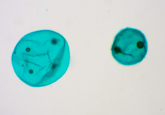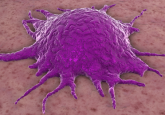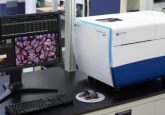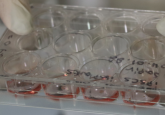Steal to survive: pancreatic cancer’s secret to tumor growth

A new study of the metabolic activity in pancreatic cell growth, reveals that cancer cells strip electrons from non-cancer cells to boost proliferation.
“It’s one of the scarier cancers because once you discover that a person has pancreatic cancer, it’s often too late because there are no symptoms,” says Ruspa Datta (Morgridge Institute for Research; WI, USA), the lead author of a recent non-invasive optical imaging study of pancreatic cancer cells. “The survival rate is so low because at that point, you can’t really do anything.” The 5-year survival rate of pancreatic cancer is 10% if the cancer has not metastasized and lowers to 3% if it has.
The research team studied the microenvironment that these tumors grow in using a pancreatic organoid, a 3D cell culture environment that replicates the physiology of an organ or tumor. They used a non-invasive and label-free metabolic optical imaging technique to follow and measure the metabolic interactions between cells in real time. This relies on the innate autofluorescence of cells to visualize these interactions, meaning additional and damaging reagents are not required.
Non-cancer cells exist alongside the cancerous ones in the extracellular matrix (ECM), which is a network of different molecules in all tissues and organs that provide structure for the cells. The ECM is essential to the tumor microenvironment and the researchers found that “the cancer cells can recruit those non-cancer cells to work for them.”
“It’s like they’re under the cancer cell’s spell. They will bring them nutrients and other things so that the cancer cell can survive,” explains Datta.
 Streamlining image analysis for mitotic cells with AI
Streamlining image analysis for mitotic cells with AI
An AI model had been developed and trained to identify mitotic cells in plant species from microscopy images, streamlining image-based analysis.
The reduction and oxidation state, or redox state, of cells will change as electrons move between molecules within a cell. As the transfer of electrons helps cells grow and divide, the researchers measured the change in redox states to study the cellular metabolic interactions that lead to tumor growth.
The ECM of the pancreas also includes pancreatic stellate cells (PSCs), and the researchers believe it is the interaction between these cells and the cancer cells that ensure the growth and survival of the tumor. “We found that when non-cancer cells are present, the cancer cell redox state becomes more oxidized and moves toward proliferation,” says Datta. “When the PSCs were touching the cancer cells, they were becoming more reduced.”
Cell proliferation occurs in most cells and is a balance of cell division and cell loss, resulting in an overall increase in the number of cells, which occurs at a higher rate in tumors. The researchers think this exchange of electrons between cancer and non-cancer cells allows the pancreatic cancer cells to overcome their redox limitation by gaining electrons from PSCs and taking advantage of the metabolic processes that result in cell proliferation.
The physical interactions that result in this changing redox state remains unknown, but Datta is hoping that understanding this mechanism will lead to the development of new targeted therapies to prevent tumor development.





